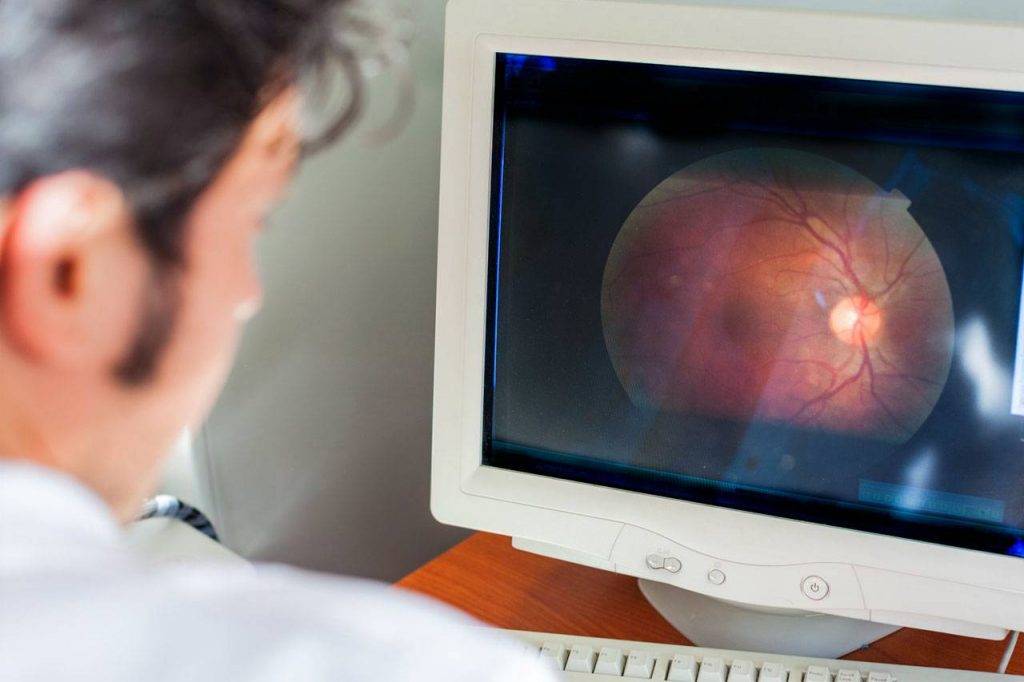Diabetes can increase your risk of eye disease and permanent vision loss.
Diabetes affects the way your body regulates glucose (sugar), and prevents the glucose from being properly absorbed by your body’s cells. When diabetes is not controlled properly, high concentrations of glucose remain in the bloodstream, threatening the integrity of the blood vessels throughout the body, and causing harm to different organs in your body.
When diabetes affects the blood vessels in the eyes, vision loss and blindness can occur.
In most cases, diabetes is associated with four different types of eye diseases, namely:
If you have been diagnosed with diabetes, it is important to understand that frequent eye exams play a critical role in the prevention of vision loss from diabetes-related eye diseases.
Follow your eye doctors advice on how often to schedule an eye exam.
Diabetic retinopathy and diabetes
Over time, diabetes can damage the blood vessels in the retina in the back of the eye, causing a disease called diabetic retinopathy.
Diabetic retinopathy is the number one cause of vision loss among people with diabetes.
In its early stages, this disease is called nonproliferative diabetic retinopathy. During these early stages, the blood vessels in the retina which have been weakened by the high concentrations of sugar in the blood, begin to leak fluid into the retina. As fluid sits in the retina, it causes blurred vision and other visual distortions.
In its later stages, the disease is called proliferative diabetic retinopathy. During these stages, the retinal blood vessels begin to close and abnormal blood vessels are produced, threatening retinal detachment and vision loss.
Factors that can increase your risk of diabetic retinopathy include:
- Uncontrolled high blood sugar levels
- High blood pressure
- Smoking
Diabetic retinopathy is generally treated with anti-VEGF medications or laser surgery.
If you have diabetes, contact an eye doctor near you, for a diagnosis and discussion on the best treatment options.
SEE RELATED: A Deeper Understanding of Diabetic Retinopathy
Diabetic macular edema and diabetes
The macula is located in the center of the retina and is responsible for central vision and vision for fine details.
If complications occur from diabetic retinopathy, fluid that has leaked from the blood vessels can spill into the macula. When this occurs, fluid buildup in the macula can lead to macular swelling and vision loss.
Diabetic macular edema affects more than half of patients with diabetic retinopathy.
Diabetic macular edema is generally treated with anti-VEGF medications, and/or laser surgery.
Cataracts and diabetes
A cataract causes the eye’s clear lens to become cloudy, resulting in distorted vision.
Cataracts have come to be considered a part of the aging process— as the eye ages, deposits of proteins that make up the lens begin to form on the surface of the lens, affecting clear vision.
In most cases, cataracts develop after age 40, and progress slowly over the course of several years— only mildly affecting vision for many years.
However, people with diabetes have been shown to develop cataracts earlier in life, and also experience a faster progression of the condition— resulting in a rapid deterioration of vision clarity over a short amount of time.
Cataract surgery is usually recommended when the patient’s performance of daily activities is significantly impacted by the cataract. During cataract surgery, the cloudy lens is replaced with an artificial intraocular lens containing the patient’s optical prescription.
Glaucoma and diabetes
Glaucoma occurs when the fluid inside the eye cannot drain from the eye properly, causing the pressure within the eye to rise. This increased ocular pressure causes progressive damage to the optic nerve, responsible for sending visual information to the brain.
People with diabetes are two-times more likely to develop glaucoma, when compared to people without diabetes.
While there are different forms of glaucoma, people with diabetes can develop a specific type of glaucoma, called neovascular glaucoma.
Neovascular glaucoma occurs when new blood vessels grow on the iris and prevent intraocular fluid from naturally flowing out of the eye.
When fluid cannot effectively drain out of the eye, the pressure within the eye increases— consequently causing damage to the optic nerve.
Neovascular glaucoma can develop quickly, without noticeable symptoms, causing permanent vision loss, even before the disease is detected. It is therefore crucial to visit your eye doctor for regular eye exams, especially if you have been diagnosed with diabetes, to allow for early detection of the disease.
Glaucoma treatment is aimed at lowering eye pressure, and generally involves medicated eye drops, anti-VEGF medication, laser treatments, or surgery.
Treatment of neovascular glaucoma involves inhibiting the formation of blood vessels on the iris, as well as lowering the intraocular pressure.
Eye exams can protect your vision
If you have been diagnosed with diabetes, it is crucial to see your eye doctor for regular eye exams. These eye exams can facilitate early detection of ocular disease, and enable early treatment— increasing your chances of optimal results.
LEARN MORE: Guide to Eye Conditions
Schedule an appointment with an eye doctor for a comprehensive diabetic eye exam, and to discuss any questions you may have about treating this condition.
Diabetes does not have to affect your eyes.
Maintain healthy blood sugar levels, keep your blood pressure and cholesterol levels under control, and visit your eye doctor for eye exams to protect your eye health and prevent vision loss from diabetes.


